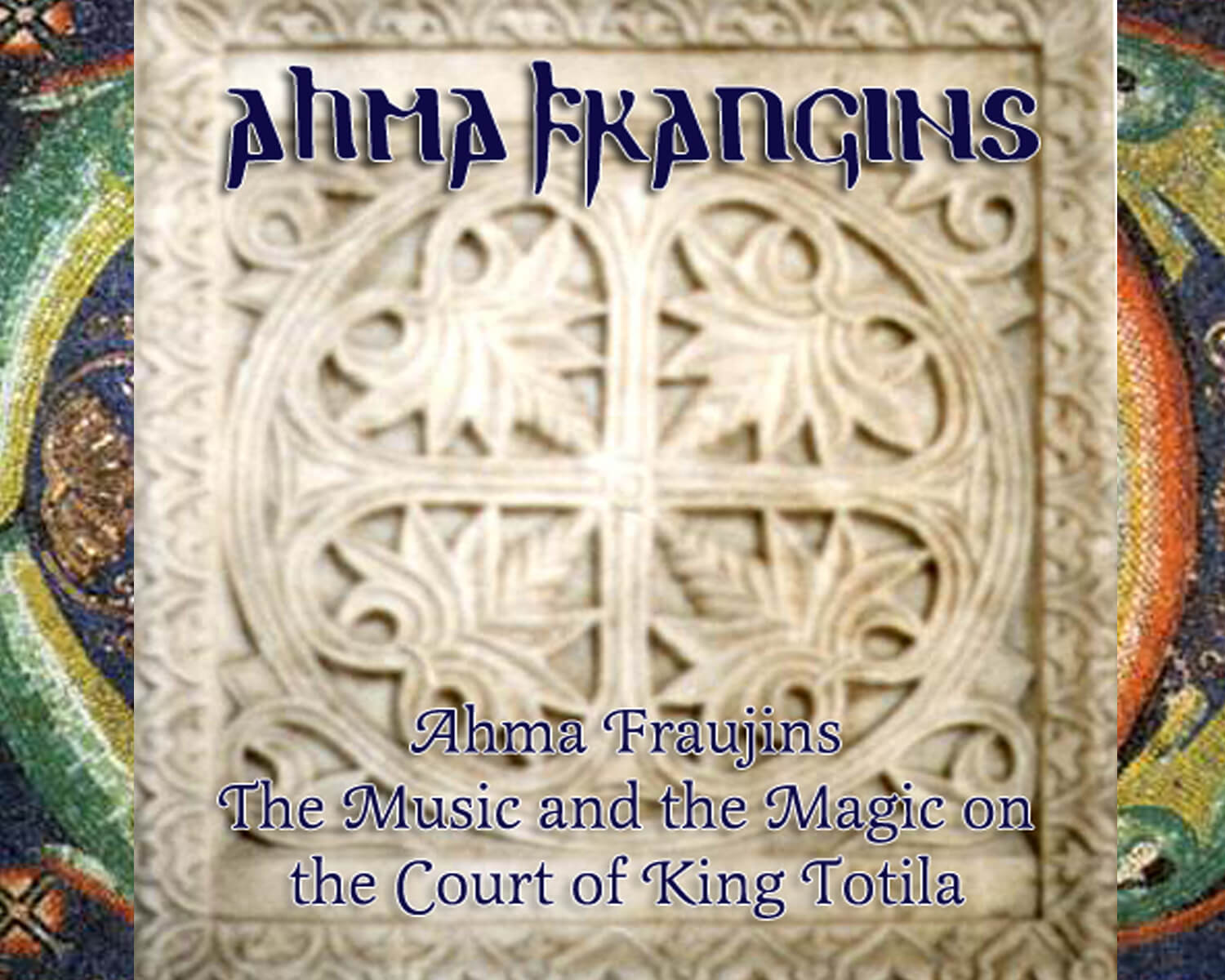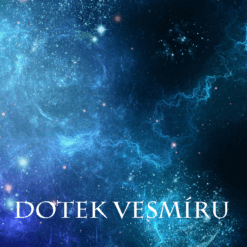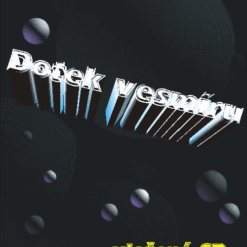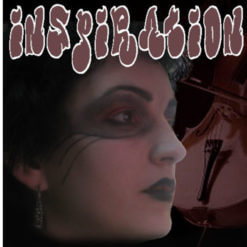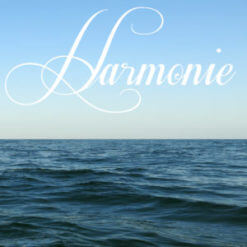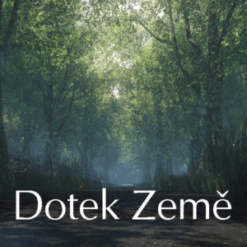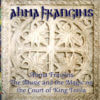Ahma Fraujins – Hudba a magie na dvoře gótského krále Totily
$4.55
Music and magic
Music and magic in the old nations merged. Magic has always sung and it was hard to imagine music without mystical content. Dance was also a mystical ritual and every musical production and every musical experience had a perfectly invented and tried and tested spiritual meaning. Gothic sword dance was a straightforward dynamic meditation. Music has always been a proven way to mystical experiences.
The ancient Dolmen builders knew it, and the old Germans knew it. The fact that we almost forgot it does not change things. We have the opportunity to wash off all the ballast of mindless as well as rationalized “classical” music, and return to the roots. The art of Music is a journey across the boundaries of space, time and world.
Throughout the Middle Ages, when non-Christian mysticism and magic were referred to as “witchcraft” and its practice punished by death, the term Music of Music was used among the initiates as a cryptogram of magic, just as runes, which in medieval times font “. It is no coincidence that the whole Middle Ages has based its music theory on the work of the philosopher, consul and confidant of King Theodoric, Severin Boethius, in which exhaustive knowledge of the Art of Music is set out. The mystics, astrologers and alchemists have been drawing on his more or less forgotten and misunderstood Institutione de musica libri quinque for several centuries. The key text to understand medieval music (especially spiritual) and aesthetics is still valid today.
“Merseburg” spells had a musical form, just as other “songs” had magical content. The art of Music is one of the forms of essential magic; Princess Lukarin knew the key to its essence. Her sung magic also sounds from this CD.
The art of Music is a ritual.
The art of Music is the gateway to the Light.
Hudba a magie
Hudba a magie u starých národů splývaly. Magie se vždy zpívala a těžko si bylo možné představit hudbu bez mystického obsahu. I tanec patřil k mystickým rituálům a každá hudební produkce a každý hudební prožitek měl dokonale vymyšlený a generacemi vyzkoušený duchovní význam. Gótský mečový tanec byl přímočarou dynamickou meditací. Hudba byla odpradávna osvědčenou cestou k mystickým zážitkům.
Věděli to stavitelé starodávných dolmenů a věděli to i staří Germáni. Fakt, že jsme to téměř zapomněli my, na věci nic nemění. Máme příležitost smýt všechen balast bezduché, stejně jako racionalizované “vážné” hudby, a vrátit se ke kořenům. Umění Hudby je cestou přes hranice prostoru, času i světa.
Termín Umění Hudby se také po celý středověk, kdy byla mimokřesťanská mystika a magie označována za “čarodějnictví” a její praktikování trestáno smrtí, užíval mezi zasvěcenými jako kryptogram magie, stejně jako runy, které ve středověku uměli číst již jen zasvěcení, platily za “čarodějnické písmo”. Není náhodou, že celý středověk opíral svou hudební teorii o dílo filosofa, konzula a důvěrníka krále Theodoricha, Severina Boëthia, ve kterém jsou vyložené vyčerpávající poznatky o Umění Hudby. Z jeho dnes víceméně zapomenuté a nepochopené Institutione de musica libri quinque čerpali mystici, astrologové i alchymisté několik století. Za klíčový text k chápání středověké hudby (zejména duchovní) a estetiky platí dodnes.
“Merseburská” zaklínadla měla hudební podobu, stejně jako další “písně” měly magický obsah. Umění Hudby patří k formám esenciální magie, kněžna Lukarin znala klíč k její podstatě. Její zpívaná magie zní i z tohoto CD.
Umění Hudby je rituálem.
Umění Hudby je branou do Světla.
Vstupte.
Ukázky
Hudbu si nejlépe vychutnáte při čtení románu Králův Havran!
Description
Ahm Fraujns – Hudba a magie
Hudba a magie u starých národů splývaly. Magie se vždy zpívala a těžko si bylo možné představit hudbu bez mystického obsahu. I tanec patřil k mystickým rituálům a každá hudební produkce a každý hudební prožitek měl dokonale vymyšlený a generacemi vyzkoušený duchovní význam. Gótský mečový tanec byl přímočarou dynamickou meditací. Hudba byla odpradávna osvědčenou cestou k mystickým zážitkům.
Věděli to stavitelé starodávných dolmenů a věděli to i staří Germáni. Fakt, že jsme to téměř zapomněli my, na věci nic nemění. Máme příležitost smýt všechen balast bezduché, stejně jako racionalizované “vážné” hudby, a vrátit se ke kořenům. Umění Hudby je cestou přes hranice prostoru, času i světa.
Termín Umění Hudby se také po celý středověk, kdy byla mimokřesťanská mystika a magie označována za “čarodějnictví” a její praktikování trestáno smrtí, užíval mezi zasvěcenými jako kryptogram magie, stejně jako runy, které ve středověku uměli číst již jen zasvěcení, platily za “čarodějnické písmo”. Není náhodou, že celý středověk opíral svou hudební teorii o dílo filosofa, konzula a důvěrníka krále Theodoricha, Severina Boëthia, ve kterém jsou vyložené vyčerpávající poznatky o Umění Hudby. Z jeho dnes víceméně zapomenuté a nepochopené Institutione de musica libri quinque čerpali mystici, astrologové i alchymisté několik století. Za klíčový text k chápání středověké hudby (zejména duchovní) a estetiky platí dodnes.
“Merseburská” zaklínadla měla hudební podobu, stejně jako další “písně” měly magický obsah. Umění Hudby patří k formám esenciální magie, kněžna Lukarin znala klíč k její podstatě. Její zpívaná magie zní i z tohoto CD.
Umění Hudby je rituálem.
Umění Hudby je branou do Světla.
Vstupte.
Music and magic
The music and magic on the court of king Totila
Music and magic blended with each other in older nations. The magic was sung, and it was hard to imagine music lacking a mystic content. Dance was also considered amystic ritual, and every music production and every music experience had a perfectly set spiritual meaning prooved by generations.The Goth sword dance is a direct dynamic meditation. From the very beginning, music was well-tried path to mystic experience. The builders of antient stone henge as well as the old Germans knew it. The fact that we have almost forgotten this, does not change this reality. We have the opportunity to wash away all the junk of empty popular music as well as of rationalized classical music and return to the origins.
The Art of Music is a journey beyond the boundaries of space, time and of the world. In the middle ages ( when non cristian mysticism and magic was regarded as witchcraft and when its practicing was punished by death), the term Art of Music was used as a magic cryptogram among insiders. So were the runes, which served as witch writing, and could only be read by insiders. It is not by chance, that the entire middle age based its music theory on the work of Severin Boëthius, a philosopher, a consul, and a confident of king Theodorich, which includes deep knowledge about the Art of Music. For many centuries, mystics, astrologists and alchymistshad a source in this more or less forgotten and misunderstood work the Institutione de musica libre quinque. The Merseburg spells had a music form, as well as other songs had a magic content. The Art of Music is considered one of the forms of essential magic, princess Lukarin held the key to its essential. Her sung magic can be heard from this CD. The Art of Music is a ritual.
The Art of Music is a gate to other worlds.
The Art of Music is a gate to Light.
Please enter.
Ahma Fraujins
Fenix lauds again on the damp black Earth, to undergo katarsis and the calls upon his old friends among the facies and on the king’s court.
The wheat was sown. Royal sons and daughetrs find Perls. Ahma Fraujins open the path of eternity.
The Ghots are arriowing again.
Ahma Fraujins
Fénix znovu usedá na vlhkou černou Zemi,
aby prošel svou katarzí, a svolává dávné přátele z vílích kruhů a
Králova dvora.
Zrno bylo zaseto.
Královští synové a královské dcery nacházejí Perly.
Ahma Fraujins otevírá cestu věčnosti.
Gótové znovu přicházejí.
Basic informations
Recorded through spring 1998 until automn 1999 in the mausoleum of king Theodorich, in the temple Apolinaire Nuovo (originaly an arian temple of Jesus Christ), in the church of St.Vitale (Ravenna), in churches St.Saturnin, St.Nectaire and the church in Aydat (Auvergne), in the crypt of church in abbey Montmajour (Provence), in the emperors chambre of castle Castel del Monte (Puglia), on Prague’s Vyšehrad, in the underground of a Prague’s house from middle age, among rocks near the mountain Kozákov and on the court of castle Pecka (Czech), on the plain Busta Gallorum (Umbria) and on the rocky coast of the island Hvar (Dalmatia).
The record is a musical twin of Thufir Hawat’s novel The King’s Raven. After reading the book most of the songs will probably gain a different contents and meaning, and by listening to the CD the book may evoke a different vision, they belong together.
©&(p) Ahma Fraujins, 1999
Tomáš Houška – singing, lyre, crwht, drums and percussion, collected, rewrote and prepared the musical and text material.
Gabriela Maud Bene – singing, percussion, cooperation with translations of songs
In the choirs sang: Zuzana Urbanová, Kornélie Goliášová, Jana, Eva, Hanka, Šakal, Čert, Richard,
Ghot’s army were fencers from the groups: Červená kumpanie, Ragnarök, X. legie, Sinister, Tercie 99/00
Production, music and sound director Tomáš Houška
Písně na albu
Já jsem světlo světa, kdo mě následuje nikdy nebude chodit v tmách.
- Yule
Tanec zpívaný a především tančený kolem nočních ohňů planoucích k oslavě svátku letního slunovratu. Když ho tančila a zpívala Lukarin, byla píseň nejspíš už několik staletí stará. Melodie se v mírných obměnách uchovala v nápěvech některých skandinávských písní dodnes.
- Bloddenveddina píseň
Květinová bohyně Bloddenvedd byla ztělesněním krásy, plodnosti a lásky. Jejím časem bylo kvetoucí slunečné jaro plné barevných květin, které si malá Lukarin vplétala do vlasů i věšela v girlandách jako ozdobu šatů. V původním armoricejském (gallském) znění si ji zpívaly dívky dávno před Lukarin a ještě dlouho po ní, v některých krajích se uchovala dodnes.
- Větrné runy
Tímto zaklínadlem se stvrzovaly runy vyrývané před svítáním do kůry stromu. Za svítání jste si pak sedli ke stromu, objali jeho kmen a opájeli se silou Slunce, která vám přes listy, větve a kmen stromu v místě vyrytých run proudila. Text je zpívaný jazykem typickým pro gótsko-italské prostředí, a sice pro dnešní lingvisty neproniknutelnou směsicí latiny a gótštiny. Tento jazyk byl ostatně ve středověku apriori považován za jazyk čarodějů.
- Dcera moře
Gnosticko – mystický text této písně je původně řecký a pochází z díla filosofa Efréma z Nisibisu. Na Totilově dvoře se píseň zpívala opět – nikoli řecky – ale gótsko-latinsky.
- Jah quith duim Lukarin
Divoký tanec temperamentní kněžny proslulé svými magickými schopnostmi.
- Mečový tanec
Za zvuku bubnů tančí gótští rytíři v kruhu svůj tanec, při kterém vzduch prořezávají dlouhá a lesklá ostří jejich mečů.
- Píseň o Hildebrandtovi
Jde o možná vůbec nejstarší dochovanou germánskou epickou skladbu. Její jazyk je směsicí gótštiny s langobardštinou a píseň pochází z konce pátého století. Zpívá se tu o tom, jak se za válek Theodoricha a Odoakara střetla dvě vojska, před ně předjeli dva stateční rytíři, kteří se rozhodli bitvu rozhodnout osobním soubojem na život a na smrt, a tu v sobě poznali, že jsou otcem a synem. Ani to je však od boje neodradilo, a tak se do sebe pustili, až třísky ze štítů létaly, jak se v písni zpívá. Závěrečné verše balady se bohužel nedochovaly. Takhle ji nejspíš zpívali staří bardi, kteří příběhem dojímali dvořany evropských králů v raném středověku.
- Zamykání řeky
Gótsko-thurynské zaklínadlo, kterým byla zamčena řeka Pád, aby se přes ni nemohl do Itálie dostat žádný nepřítel.
- Zaklínadlo merseburské čarodějnice
Toto thurynské zaklínadlo se zpívalo před bitvou. Popisuje, jak si Walkýry přišly označit vyvolené rytíře, kteří v nastávající bitvě padnou, aby je pak mohly odvést s sebou do Walhaly.
- Zničím tento dům
Vícesmyslná parafráze verše Janova evangelia, jde o přivolávání konce zjeveného světa, při němž vše splyne ve všeobsahující božské Jednotě. Kněžna Lukarin jím zaklínala město, které následující noci Teiovi Gótové smetli s povrchu země.
- Jah than theina
Text písně je téměř doslovnou citací ze dvou gótských evangelií dochovaných ve Wulfilově bibli. Ježíš v nich vysílá své apoštoly a dává jim sílu k šíření pravdy a Světla.
- Nih ahjaith
Bojová píseň. Zpívaly ji nastupující pluky železné gótské jízdy před tím než vyrazily do cvalu proti nepříteli.
- Druhé merseburské zaklínadlo
Tímto thurynským zaklínadlem se působením na božskou podstatu duše léčily rány těla. Jeho text je o tom, jak si Odinův kůň vymkl kotník a Odin mu ho napravil, aby byl kůň zase zcela zdráv. Jde o starou a po celé planetě rozšířenou magickou praktiku.
- Atta unsar
Gótský Otčenáš, jeho text se dochoval ve Wulfilově bibli, téma melodie v nápěvech mnoha pozdějších písní. Jeho text Wulfila překládal patrně ještě původního znění Abvún d´Baauchovaného v Pešitě
- Ahma Fraujins
Gótský chorál zvěstující příchod Ducha Božího. Cosi jako gótský „Narodil se Kristus Pán“.
Pojďte na cestu a ujděte co nejdál to půjde, dokud je osvětlena.
Songs
I´m the light of the world, he who follows me shall never walk in darkness.
Yule
A dance sung but mostly danced round a night fire – burning to celebrate the Yule. When Lukarin song and danced this song, it was most probably a couple centuries old already. In some Scandinavian songs the melody has been preserved in slight differences until present.
Tanec zpívaný a především tančený kolem nočních ohňů planoucích k oslavě svátku letního slunovratu. Když ho tančila a zpívala Lukarin, byla píseň nejspíš už několik staletí stará. Melodie se v mírných obměnách uchovala v nápěvech některých skandinávských písní dodnes.
The song of Bloddenwedd
The flower goddes Bloddenwedd representied beauty, fortility and love. The time of her reign was the sunny flowering spring, full of colorful flowers, which littleLukarin braided into her hair and hung in girlands on her dress as decoration. Girls sang this song in the original celtic version long before Lukarin and long after – in some countries it has been preserved until present.
Bloddenveddina píseň
Květinová bohyně Bloddenvedd byla ztělesněním krásy, plodnosti a lásky. Jejím časem bylo kvetoucí slunečné jaro plné barevných květin, které si malá Lukarin vplétala do vlasů i věšela v girlandách jako ozdobu šatů. V původním armoricejském (gallském) znění si ji zpívaly dívky dávno před Lukarin a ještě dlouho po ní, v některých krajích se uchovala dodnes.
Windy runs
The runs curved into the bark of trees before down were hardened by this spell. At dawn, you would sit by a tree, hug its trunk and enjoy the strenght of the Sun, which flow throught leaves, branches and the trunk of a tree through the curved runs. The text is sung in the language typical for the ghot-italian environment, and is thus an indecipherable micture of latin and ghot. In the middle ages this language was considered the language of wizards.
The daughter of the Sea
The gnostical-mystic text of this song is originaly Greek and originates in the work of philosopher Efrem from Nisibis. The song was sung again on the court of Totila – not in Greek but in the ghot-latin language.
Jah quith duim Lukarin
A wilde dance of the temperament princes famous for her magic abilities.
The sword dance
Accompanied by the sound of drums, ghots knights dance their circle dance, in which long and shiny blades of their swords swift through the air.
Hildebrandt’s song
It is most probably the oldest preserved German apical composition. Its language is micture of the Ghot and the Langobard language and the song originates from the end of the 5th century. The theme oof the song is from the era of wars between Theodorich and Odoakar – two armies meet and two brave knights step forward to decida the battle by a personal duel a mather of live and death – and it is then that they recognise themselves as father and son. Not even this stops them from fighting and as it is sung in the song they faught so toughty that chips were flying of ther shields. The find verse has not preserved. It has been most probably sung this way by old bards who impressed the courts of kings by the story in the early middleages.
The spell of the witch of Merserburg
This thurin spell was sung before a fight. It describes how Walkers come and marked chosen knights, who would die in the fight, andconsequently took them to Walhal with them.
I will destroy this house
A multimeaning peraphrase of the verse of the gospel of St. John, about the colling of the end of the world – when everything blends with the all prevading divine Unity. Lukarin casted this spell upon a city, which was completely destroyed by Teie’s Ghots the following day.
Jah than theina
The text of the song is almost an extract citation of parts of two ghots gospels preserved in Wulfila bible. Jesus sends his apostols and gives them strenght to spread the Truth a Light.
Nih ahjaith
A war chant. It was sung by units of the iron ghot cavalery before galloping towards the enemy.
The second spell of Merseburg
By influencing the divine core of the soul, the wounds of body were heated by this thuryngs spell. The text tells us about how the horse of Odin sprained his ancle and Odin fixed it, so the horse was in proper health again. It is an old magic ritual spred all over the planet.
Ahma Fraujins
A ghots choral announcing the arrival of the Holy Spirit.
Step on your path, and walk as for as you can, until it is lit up.
Lyrics / Texty
Atta unsar
The ghots “Our Father”, its text was preserved in Wulfila bible, the melody in chants of meny later songs.
ik im liuhath manasedais
saei laisteith mik ni gaggith in rigiza
sk habaith liuhath libainais.
yule – sunnau
Si geheilagot sunnau; Unsar brot taglihhaz gig sunnau; Sunnau geheilagot
bloddenwedd
Ni gabaurts aithei aithau atta. Gaskaits us niuntha sigwans.
Us akran baugmis, us himinis akrano, us fairgunis blomde
Us bagimis blomde, us airthis waurthis, us hawis haithos
Us ahwos niunda, us himinis fulgama, us menas liuhat
Gaskaits us niuntha sigwans
winds rauens
Jus winds rauens trijus gibai lauf aperirian sunno. Apeririam in manus
De siderare liuhat samaleihs maurgins sunno. Gatairan rauen mahts unte waldufni
Jus lekinassus handus us kunung gabaurths Galer sunau dagis unte dauthariwe nahts seins magan unte izwara.
filia maris
Filia maris nost est, mare sine finis. Unte ab maris, cuius oriébar, geró in pectí potens divitiae plenus occultus rauen.
Inquiré in mare, sed nonquaeré domine maris.
jah quth duim
Jah quth duim: ibai Lukarin quimith duthei uf melan satjaidau aiththau undar ligr?
Niu ei ana lukar nastathan satjaidau?
Nih allis ist chva fulginis thatei ni gabairhtjaidau: Nih warth ana laugn, ak ei swikunth wairthai.
Jabai chvas habai ausona haus jandona, gehausjai. Jah qath du im: saichvith, chva hauseith!
In thizaiei mitath mitith, mitada izwis jah biaukanda izwis thaim galaubujandam. Unte thischvammeh saei
habaith gibada imma; jah sei ni habaith jah thatei habaith afnimada imma.
hildebrandslied
Ik gihorta dat seggen,
dat sih urhettun anon muotin:
Hiltibrant enti Hadubrant untar heriun tuem.
sunufatarungo iro saro rihtun,
garutun se iro gudhamun, gurtun sih iro suert ana,
helidos, ubar hringa, do sie to dero hiltiu ritun.
Hiltibrant gimahalta, Heribrantes sunu,
– her uuas heroro man,
ferahes frotoro- her fragen gistuont
fohem uuortum, hwer sin fater wari
fireo in folche,
“eddo hwelihhes cnuosles du sis.
ibu du mi enan sages, ik mi de odre uuet,
chind in chunincriche. Chud ist mi al irmindeot.”
Hadubrant gimahalta, Hiltibrantes sunu:
“dat sagetun mi usere liuti,
alte anti frote, dea érhina warun,
dat Hiltibrant hatti min fater, ih heittu Hadubrant.
forn her ostar giweit, floh her Otachres nid,
hina miti Theotrihhe enti sinero degano filu.
her furlaet in lante luttila sitten,
prut in bure barn unwahsan,
arbeo laosa. her raet ostar hina.
des sid Detrihhe darba gistuontun
fateres mines: dat uuas so friuntlaos man.
her was Otachre ummet tirri,
degano dechisto miti Deotrihhe.
her was eo folches at ente: imo was eo fehta ti leop.
chud was her chonnem mannum.
ni waniu ih iu lib habbe.”
“wettu irmingot”, quad Hiltibrant, “obana ab heuane, dat du neo dana halt mit sus sippan man
dinc ni gileitos!”
want her do ar arme wuntane bauga,
cheisuringu gitan, so imo se der chuning gap,
Huneo truhtin: “dat ih dir it nu bi huldi gibu.”
Hadubrant gimahalta, Hiltibrantes sunu:
“mit geru scal man geba infahan,
ort widar orte.
du bist dir, alter Hun, ummet spaher;
spenis mih mit dinem wortun,
wili mih dinu speru werpan
pist also gialtet man, so du ewin inwit fortos.
dat sagetun mi seolidante
westar ubar wentilseo, dat inan wic furnam:
tot is Hiltibrant, Heribrantes suno.”
Hiltibrant gimahalta, Heribrantes suno:
“wela gisihu ih in dinem hrustim,
dat du habes heme herron goten,
dat du noh bi desemo riche reccheo ni wurti.-
welaga nu, waltant got”, quad Hiltibrant,
“wewurt skihit!
ih wallota sumaro enti wintro sehstic ur lante,
dar man mih eo scerita in folc sceotantero.
so man mir at burc enigeru banun ni gifasta.
nu scal mih suasat chind suertu hauwan,
breton mit sinu billiu- eddo ih imo ti banin werdan.
doh maht du nu aodlihho, ibu dir din ellen taoc,
in sus heremo man hrusti giwinnan,
rauba birahanen, ibu du dar enic reht habes.”-
“der si doh nu argosto”, quad Hiltibrant, “ostarliuto,
der dir nu wiges warne, nu dih es so wel lustit,
gudea gimeinun. niuse de motti,
hwerdar sih hiutu dero hregilo rumen muotti,
erdo desero brunnono bedero uualtan!”
do lettun se arist asckim scritan
scarpen scurim, dat in dem sciltim stont.
do stoptun to samane staimbort hludun,
heuwun harmlicco huitte scilti,
unti im iro lintun luttila wurtun,
giwigan miti wabnum
merseburger
zauberspryche
eiris sazun idisi; sazun her duoder
suma hapt heptidun, suma heri lezidun, suma clubodun umbi cuoniouuidi
insprinc haptbandun inuar uigandun
gatairan
Gatairan thana hrot,
Niman instauratum domum.
Uf brian thana hrot,
Niman instauratum domum
Brikan thana hrot,
Niman instauratum domum.
Usbauljan thana hrot,
Niman instauratum domum
Non relinqueith stains zi stains.
Alls discjicetum írí.
Alls adnihilum venitum írí
jah than theina
Jah than theina silbons, saiwala thairgaggithairus
ei andhuljaindau, us managaim hairtam mitneis
Gahaitands than thans, twa-lif apaustauluns
atgaf im mach jah waldufni, ufar allaim unhulthom jah suhtis gahaiiljan.
Jah insadida ins merjan thiudangardija gudis
jah gahiljan allans thans unailans.
Jah quath du im: ni waiht nimaith in wig;
nih waluns nih matibalg nih hlaib nih skattans,nih than tweihnos paidos haban.
Jah in thanei gard thar saljith jah thathroh usgaggaith.
Jah swa managai swe ni andnimaina izwis
usgaggandans us thizai baurg jainai jah mulkda
af fotum izwaraim
afrisjaith du weitwo dithai ana ins.
Usgaggandans than thairhiddjedun and hamois wailamerjans jah leikinondans and all.
nih ahjaith
Jah atidja dath rign jah
Gemun ahwos, jah waiwuon windos
Jah bistugqun bi jainamma razna
Jah gadraus jah was drus is mikils
Nih ahjaih thathei gemjau lagjau
Gawairthi ana airtha
Ni qam lagjan gawairthi ak hairu
Qum auk skaidan mannan
withra withra attan
is jah dauthar withra aithei izos
jah bruth withra swaihron izos
merseburger
zauberspryche
phol ende uuodan uuorun zi holza
du uuart demo balderes uolon sin uuoz birenkit
thu biguol en sinthgunt sunna era suister
thu biguol en friia uolla era suister
thu biguol en uuodan so he uuola conda
sose benrenki
sose bluotrenki
sose lidirenki
ben zi bena bluot zi bluoda
lid zi geliden sose gelimida sin
atta unsar
atta unsar thu in himinam
weihnai namo thein
qimai thiudinassus theins wairthai
wilja theins swe
in himina jah ana airthai.
Hlaif unsarana thana sinteinan
gif uns himma daga
jah aflet uns thatei skulans sijaima
swaswe jah weis afletam
thaim skulam unsaraim
jah ni briggais uns in fraistubnjai
ak lausei uns af thamma ubilin
unte theina ist thiudangardi jah mahts
jah wulthus in aiwins
ame
Ahma fraujins
Ahma Fraujins anna mis in thizei
gasalboda mik du wailamerjan unledaim insandida
mik du ganasjan thans
gamalwiddans hairtin
thande liuhat
Thande liuhat habaih, galaubeith du liuhada
Ei sunjus liuhadis wairthaith.
Gótové
Původní domov Gótů leží v jižní Skandinávii a na ostrově Gtland, ale v průběhu druhého století přesídlili až do černomořských stepí, kde založili mocné království. Po několik generací pak podnikali pistošivé nájezdy na Římskou říši.
Biskup Wulfila (*310(?) †383 A.D.), stoupenec otce Areia, zvěstoval Gótům ve 4. stol. křesťanství. Přitom vytvořil gótské písmo a kolem r. 369 začal překládat Bibli do Gótštiny. Wulfilova Bible patří k nejstarším překladům Písma, a především k překladům nejautentičtějším – otec Wulfila při překladu používal některé původní rukopisy, které se mnoha pozdějším překladatelům už nedochovaly.
Později se Gótové rozdělili (dle tradice na východní Ostrogóty a západní Visigóty), usadili se a přijali mnoho civilizačních prvků od Říma. Po příchodu Hunů se Visigóti uchýlili za Dunaj a Ostrogóti se stali spojenci Attily. Visigóti po vítězné válce proti císaři Valensovi prošli Balkánem, dobyli a vyplenili Řím, ovládli Gallii a Hispánii. Ostrogóti se po příchodu Hunů odstěhovali do Dácie a po smrti Attily do Ilýrie.
Za krále Theodoricha ovládli i Itálii, později získali alpské země, Provence a dočasně se obě gótská království opět spojila. Vláda Theodoricha v Itálii (493-526) byla dobou uklidnění, stabilizace a rozkvětu. Ostrogótský dvůr byl kulturně i nábožensky velmi tolerantním prostředím: Byl otevřený nejen stoupencům různých proudů raného křesťanství, ale i stoupencům jiných vyznání. Gótská nobilita se navíc přes formální přihlášení k ariánství neodříkala směsi antického, gallského a především germánského pohanství. Gótština byla v té době jakýmsi diplomatickým jazykem v germánském prostředí. Za vlády Theodorichových dědiců bohužel došlo k rozpadu moci a vnitřním bojům, kterých využil byzantský císař Justinián k invazi do Itálie. Rozpoutal tím gótskou válku (535-553), jednu z nejkrvavějších a nejtemnějších kapitol lidských dějin.
Totila nastoupil na trůn v okamžicích největšího úpadku, během své vlády (541-552) však dokázal osvobodit Itálii od Byzantinců a snažil se znovu vybudovat pořádek. Byl úspěšným vojevůdcem, ale také velmi lidským a tolerantním vládcem, který si získal srdce nejen Gótů a Italů , ale i četných imigrantů, kteří v té době nacházeli v Itálii svobodu a bezpečí. Mezi jeho důvěrníky a rádce patřil i svatý Benedikt a jeho žáci, mniši z kláštera Monte Cassino. Totila padl v bitvě na Busta Gallorum, když se pokoušel zastavit obnovený vpád nesčetných žoldnéřských vojsk najatých Justiniánem (Hunové, Herulové, Massageti, Řekové, Thrákové, Isauři, Slované, Arméni…). Thurynská kněžna Lukarin žijící na Totilově dvoře prokázala Totilovi a jeho nástupci Teiovi mnohé diplomatické služby a pro mnohé byla obávanou čarodějnicí. Po prohrané válce v Itálii se účastnila exodu Ostrogótů do Gothie (dnešní Languedoc a Roussillon). Potomci Gótů dnes žijí kolem Pyrenejí a v Katalánii (podle kronikářů kdysi Got-Alania).
Ghots
The original homeland of the Ghots lies on the island of Götland in Scandinavia, but during the second centurythe moved to the Black sea prairies where they estabilished a strong kingdom. For several generation the attacked the Roman empire. Bishop Wulfila (Uulfila) (*310? – †383 A.D.), the follower of father Areius, brought christianity to the Ghots in the 4th century. He also created “Ghot” writing and around the year 369 he began translate the Bible to the Ghot language. The Wulfila’s Bible is considered one of the oldest translations of the Bible, and mainly one of most authentic ones – father Wulfila also used some original writings for this translations, which were inaccessible to the later translators. Later Ghots split into the estern Ostroghots and western Visighots. They settled and accepted many civilised ways of Rome. After the arrival of Huns the Visighots found home near the river Danube and the Ostroghots became cooperators of Attila. After they victory over emperor Valens in the Battle near Adrianopolis, the Visighots passed through the Balkan region, they conquested and damaged Rome and took over Galia and Hispania. After the arrival of Huns the Ostroghots moved to Dacia and after the death of Attila to Ilyria.
During the reign of king Theodorich they took over Italy, later they also gained the lands of Alps, Provence and the two ghot kingdoms reunited temporarily. The reign of Theodorich in Italy (493 – 526) was a calm period of stabilisation and flowering. The Ostroghot court had a very tolerant environement in whole concerus religion and culture. It was open to not only the members of various directions of early christianity, but also to other believers. The Ghot nobility, xxx their formal appartenance to arianism, didn’t reject a mixture of antique, celtic and especialy germainic paganism. The Ghot language was the diplomatic language in the germanic environement at that time. During the reign of Theodorich’s descendents the power was diffused and the byzantion emperor Justinian took advantage of their internal conflicts and invaded Italy. He started the “ghot war” (535 – 553) one of the most bloody and obscure chapters of the history of man.
Totila ascended the throne at the time of the bigges decadence, but during his reign he succeded Italy from the Byzantinians and he tried to restore order. He was a succeful leader, but also very human and tolerant ruler, who gained the hearts of not only the Ghots and Italians, but also those of numbeous immigrants who seeked liberty and safe environement in Italy. St. Benedictus and his disciples – the monks from the monastery of Monte Cassino were counted among his advisors and confidants.
Totila died in the battle at Busta Gallorum, where he tried to reject the new attack of vast number of armies hired by Justinian (Huns, Heruls, Massagets, Greeks, Thraks, Isaurs, Slavs, Armenians, Gepids, Langobards…).
The thuryng princes Lukarin, living on Totila’s court exerceed many diplomatic services for Totila and for Teia, which ascended the trhone after Totila. She was a fearfull witch for many people. After the lost war in Italy she participated on the exodus of Ostroghots to Ghotia (today Languedoc and Roussillon). The descendants of Ghots live around the Pyrenis and in Katalania (Ghot-Alania).
Hudbu si nejlépe vychutnáte při čtení románu Králův Havran!
Additional information
| Délka | 100-120, 80-100 |
|---|---|
| Podle použití | Cosplay, Larp battle, Soft larp |
| Žánr/období | Medieval |
| Podle druhu | Sword |



